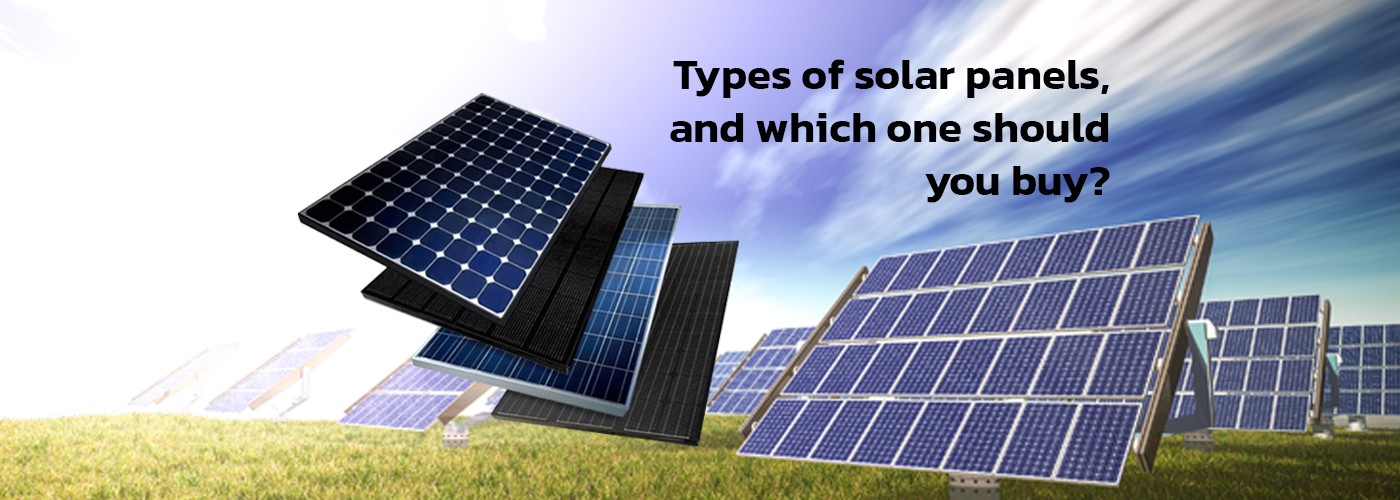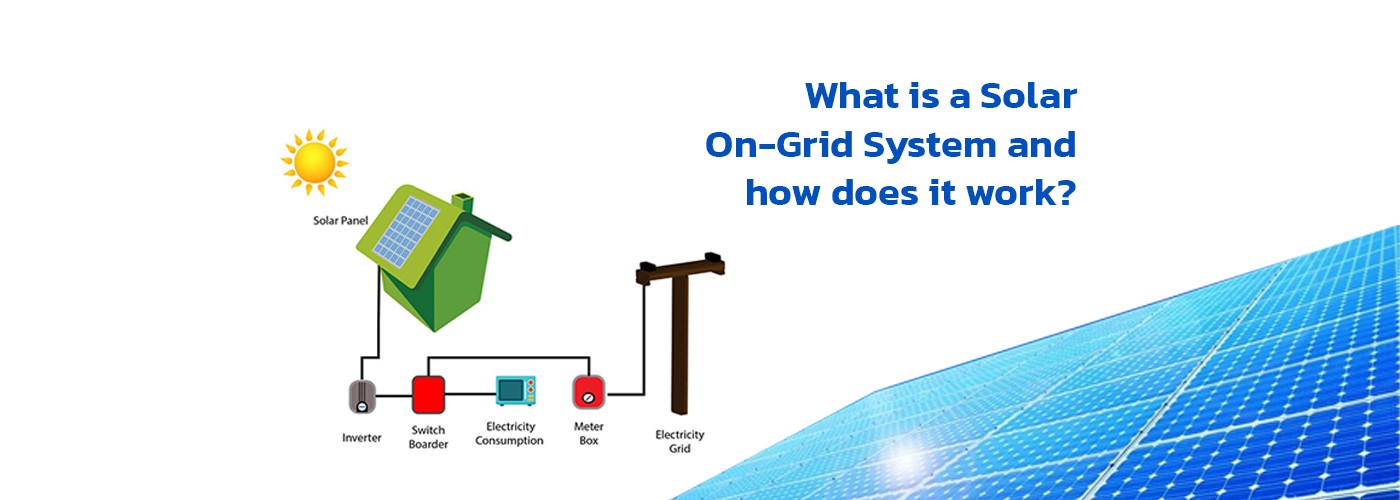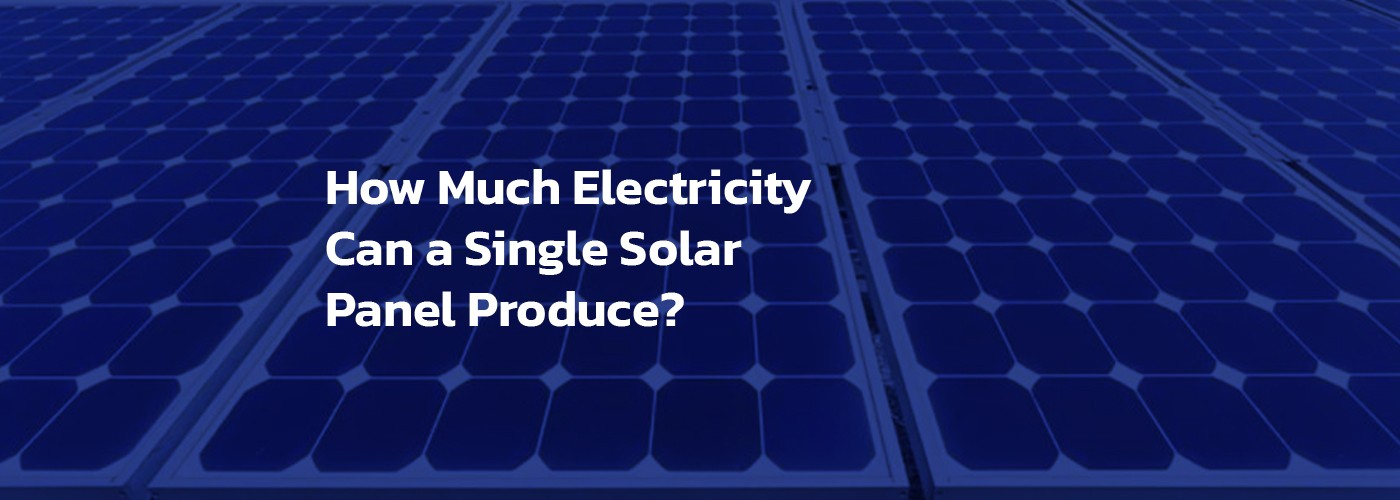Types of Solar Panels and Which One Should You Buy?

Monocrystalline solar panels, polycrystalline solar panels, and thin film solar panels make up the majority of solar panels on the market today for residential solar energy systems.
The type of solar panel is determined by the solar cells that make it up. Because each type of solar cell has its own set of properties, certain panels are better suited for specific scenarios. To help you decide which types of solar panels are best for your home, we’ve put up a comprehensive overview of monocrystalline, polycrystalline, and thin film solar panels.
The most important takeaways:
- Solar panels are divided into three categories: monocrystalline, polycrystalline, and thin film.
- Monocrystalline solar panels are more efficient and have a sleeker shape than other solar panels, but they are more expensive.
- Polycrystalline solar panels are less substantially low cost than monocrystalline panels, however,, they are less efficient and less attractive.
- The cheapest solar panels are thin film solar panels however they have the lowest efficiency rating and require a lot of space to meet your energy needs.
- It is significantly more vital to choose a brand of solar panels and a solar installer than it is to install a specific type of solar panel.
Types of Solar Panels
Here you will find the types of solar panels that are best for your home and which one you should buy as per your requirements.
1. Monocrystalline Panels
The most common solar panels utilized in rooftop solar panel installations nowadays are monocrystalline solar panels. The process of monocrystalline silicon solar cells involves placing a silicon “seed” crystal into a molten vat of pure silicon at a high temperature. This technique produces a single silicon crystal, known as an ingot, which is then sliced into thin silicon wafers and utilized in solar modules.
Monocrystalline solar panels are available in a variety of shapes and sizes these days. PERC cells, or Passivated Emitter and Rear Contact cells, are a monocrystalline alternative that is becoming increasingly popular. PERC cells undergo a unique manufacturing and assembling process that boosts the amount of electricity they can generate.
Monocrystalline solar panels are available in a variety of shapes and sizes these days. PERC cells, or Passivated Emitter and Rear Contact cells, are a monocrystalline alternative that is becoming increasingly popular. PERC cells go through a special manufacturing and assembly process that increases the amount of energy they can produce.
Monocrystalline solar panels have efficiency ratings ranging from 17 to 22 percent, making them the most efficient solar panel type. Monocrystalline panels’ greater efficiency rating makes them perfect for homes with limited roof space, as you’ll need fewer panels to generate the same amount of electricity.
2. Polycrystalline Panels
Polycrystalline panels, also known as multi-crystalline panels, are a popular choice among low-cost solar panel installers. Polycrystalline panels are made of silicon solar cells, just like monocrystalline panels. However, the cooling process is different, resulting in the formation of numerous crystals rather than just one.
The efficiency ratings of polycrystalline panels will normally vary from 15% to 17%. Because of the way electrons pass through the solar cell, the efficiency rates are lower. Because polycrystalline cells comprise several silicon cells, electrons cannot flow as freely as they may in monocrystalline cells, lowering the panel’s efficiency.
Polycrystalline panels have a lower power output than monocrystalline panels due to their lower efficiency, which typically ranges between 240 and 300 watts.
3. Thin Film Panels
Because of their lower efficiency ratings, thin film solar cells are typically used in large-scale utility and industrial solar installations. A thin layer of a photovoltaic substance is deposited onto a solid surface, such as glass, to create thin film solar panels. Amorphous silicon (a-Si), copper indium gallium selenide (CIGS), and cadmium telluride are examples of photovoltaic materials (CdTe). Although each of these materials generates a distinct “kind” of solar panel, they all fall under the thin film solar cell umbrella. The photovoltaic material is transformed into a thin, lightweight sheet that can be flexible in some instances throughout the production process.
Thin film panels, despite having lower performance requirements in most other categories, have the best temperature coefficient, which indicates that when the temperature of a solar panel rises, the panel produces less electricity. The temperature coefficient indicates how much the panel’s power output will decrease for every 1°C from 25°C.
Price Comparisons
Because of its production method and higher performance capabilities, monocrystalline panels are the most expensive of the three varieties of solar panels.
Polycrystalline panels have always been the most cost-effective alternative for households that want to go solar without sacrificing panel performance. Between 2012 and 2016, low pricing allowed polycrystalline panels to capture a considerable portion of the home solar industry. Thin film solar panels are the most affordable of the solar panel varieties, owing to their ease of installation and minimal equipment requirements. They do, however, have far lower performance capabilities and require a significant amount of land to create enough electricity to power a home.
What Sort of Solar Panel is Best for Your Home?
For home solar installations, monocrystalline solar panels are the best option.
Even though you’ll pay a little more, you’ll get a system with a more modest appearance without sacrificing performance or longevity. Furthermore, monocrystalline panels’ high efficiency and power output ratings might save you money throughout the course of your system’s lifespan.
Also, Polycrystalline panels may make more sense if you’re on a restricted budget. We don’t recommend thin film solar panels for home installations since their performance and durability aren’t worth the low cost, and you’re unlikely to have nearly enough room to install the number of thin film panels required to cover your household electricity consumption.
Conclusion
When going solar, the installation is perhaps the most crucial factor to consider. You’ll have a solar panel system on your roof for at least 25 years, so you’ll need someone you can trust for that long! We recommend local, reliable solar providers with excellent customer reviews since they provide the most personalized solar project service.
Read Also: List of Solar Panel Manufacturers in India




